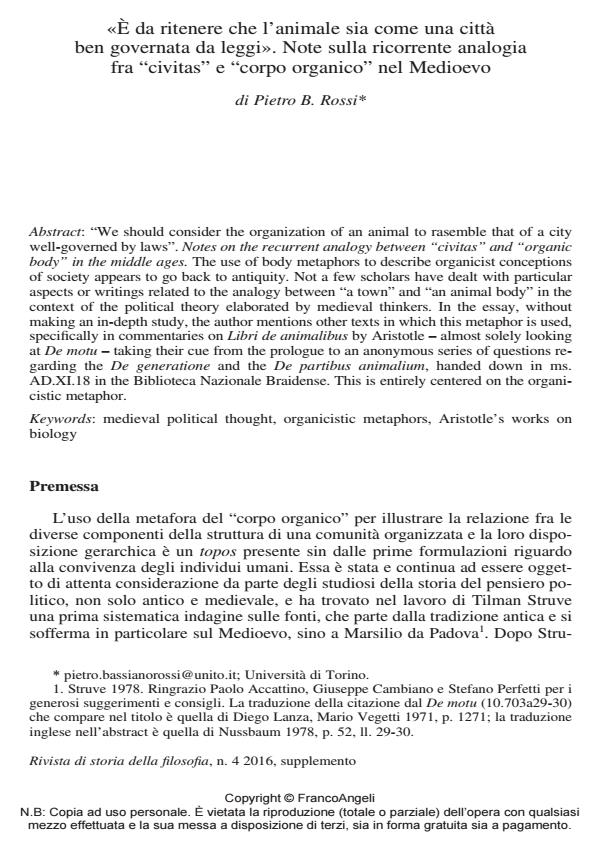«È da ritenere che l’animale sia come una città ben governata da leggi». Note sulla ricorrente analogia fra "civitas" e "corpo organico" nel Medioevo
Titolo Rivista RIVISTA DI STORIA DELLA FILOSOFIA
Autori/Curatori Pietro B. Rossi
Anno di pubblicazione 2016 Fascicolo 2016/suppl. 4
Lingua Italiano Numero pagine 15 P. 51-65 Dimensione file 118 KB
DOI 10.3280/SF2016-004-S1005
Il DOI è il codice a barre della proprietà intellettuale: per saperne di più
clicca qui
Qui sotto puoi vedere in anteprima la prima pagina di questo articolo.
Se questo articolo ti interessa, lo puoi acquistare (e scaricare in formato pdf) seguendo le facili indicazioni per acquistare il download credit. Acquista Download Credits per scaricare questo Articolo in formato PDF

FrancoAngeli è membro della Publishers International Linking Association, Inc (PILA)associazione indipendente e non profit per facilitare (attraverso i servizi tecnologici implementati da CrossRef.org) l’accesso degli studiosi ai contenuti digitali nelle pubblicazioni professionali e scientifiche
Notes on the recurrent analogy between "civitas" and "organic body" in the middle ages. The use of body metaphors to describe organicist conceptions of society appears to go back to antiquity. Not a few scholars have dealt with particular aspects or writings related to the analogy between "a town" and "an animal body" in the context of the political theory elaborated by medieval thinkers. In the essay, without making an in-depth study, the author mentions other texts in which this metaphor is used, specifically in commentaries on Libri de animalibus by Aristotle - almost solely looking at De motu - taking their cue from the prologue to an anonymous series of questions regarding the De generatione and the De partibus animalium, handed down in ms. AD.XI.18 in the Biblioteca Nazionale Braidense. This is entirely centered on the organicistic metaphor.
Parole chiave:Medieval political thought, organicistic metaphors, Aristotle’s works on Biology
- TRADE AND ECONOMY IN MEDIEVAL SERBIA Srđan Rudić, Desanka Kovačević Kojić, in Zbornici radova Istorijskog instituta Beograd /2025 pp.33
DOI: 10.34298/ZR9788677431600.R033
Pietro B. Rossi, «È da ritenere che l’animale sia come una città ben governata da leggi». Note sulla ricorrente analogia fra "civitas" e "corpo organico" nel Medioevo in "RIVISTA DI STORIA DELLA FILOSOFIA" suppl. 4/2016, pp 51-65, DOI: 10.3280/SF2016-004-S1005